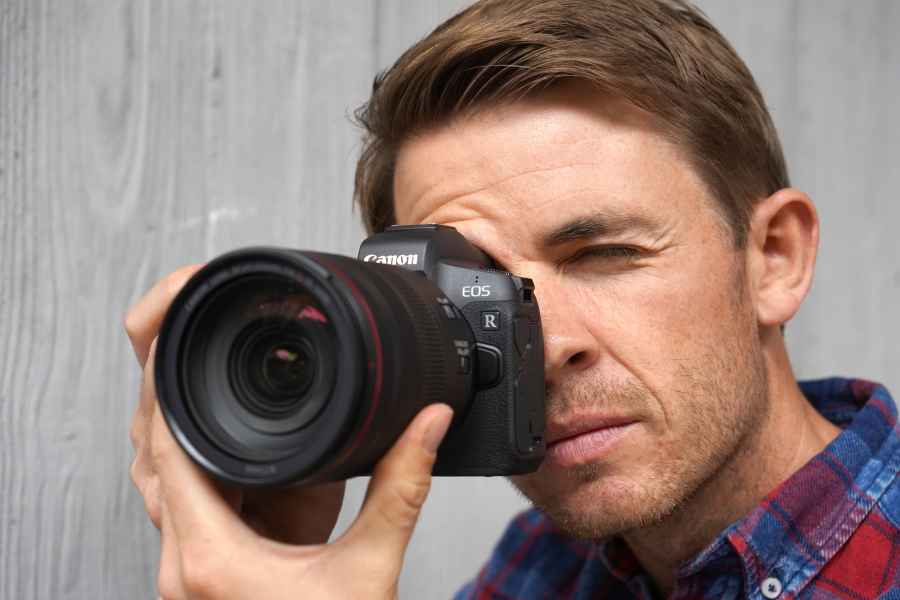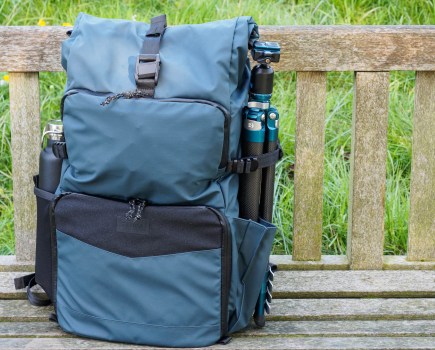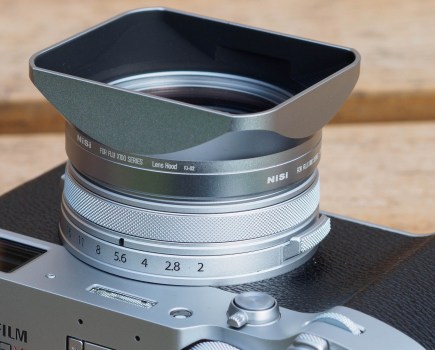Canon EOS R : At a glance
- £2,349 (body only with EF-EOS R mount adapter)
- 30.3-million pixel full frame
- ISO 100-40,000 (extendable to ISO 50-102,400)
- New RF lens mount
- Released alongside four Canon RF full frame lenses
- 8fps continuous shooting
- Single card slot (SD/SDHC/SDXC)
Read our full review of the Canon EOS R
It was only a matter of time until Canon responded to the recent launch of the new Nikon Z7, Nikon Z6 and all-new large-diameter Nikon Z-mount. Talk that the manufacturer might be working on something and could release a full-frame mirrorless camera before the end of the year has finally come true – news that has been met with a great amount of interest from the millions of Canon-faithful users around the world. Just as many of the rumours suggested, the official name of the camera is the Canon EOS R.
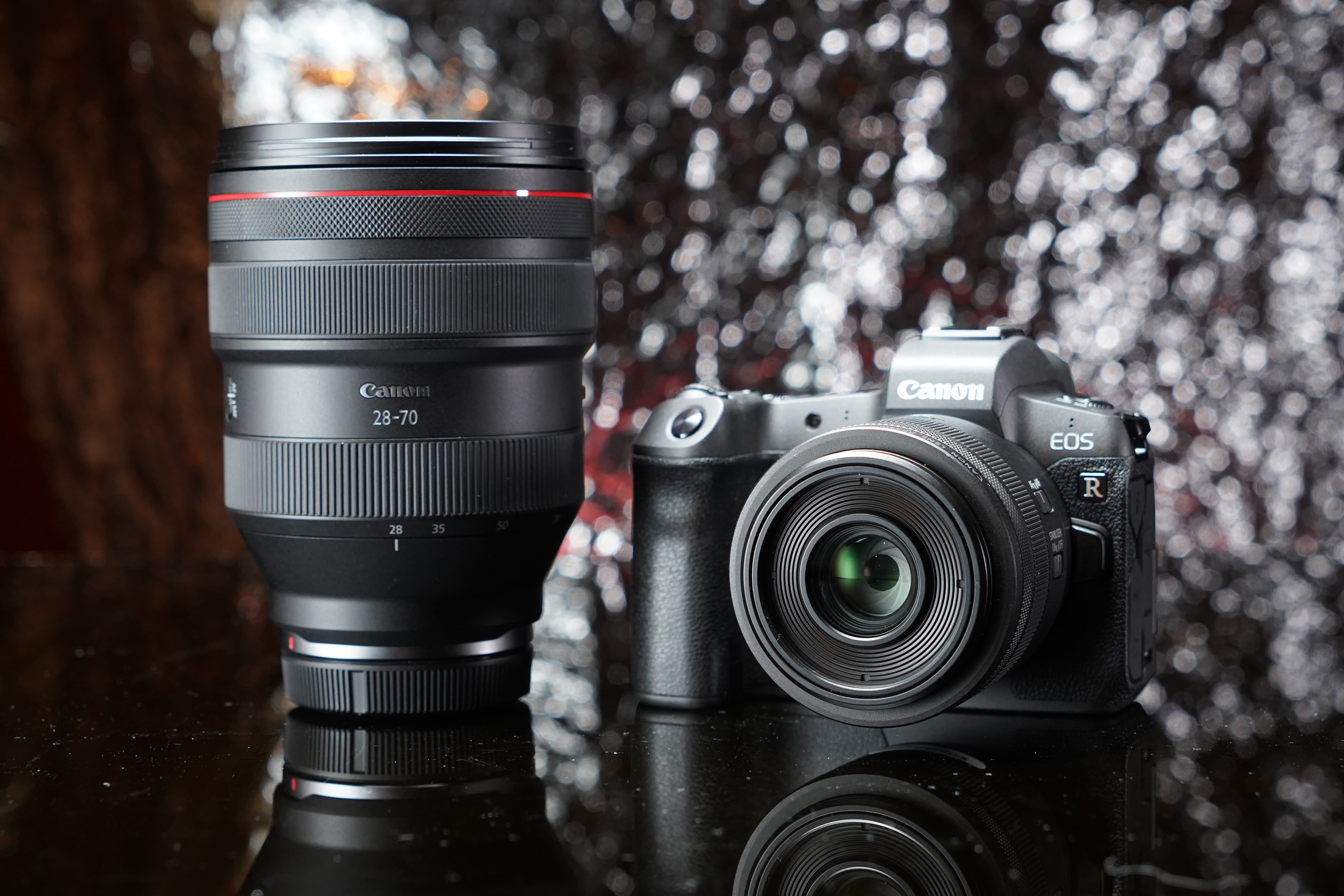
The Canon EOS R alongside the monstrous RF 28-70mm f/2 L USM
We’re not just looking at a new camera here – we’re looking at an entirely new system and a never-seen-before Canon RF mount. Canon’s eagerly awaited full frame mirrorless system will initially be supported by four Canon RF full-frame lenses and existing Canon EF lens owners will be delighted to hear that they’re not left in the dark. Those who already own Canon EF lenses will find they’re compatible with the Canon EOS R via one of three EF-EOS R adapters.
On first glance the Canon EOS R and new Canon RF lenses look promising. Delve beneath the surface though and you’re likely to find yourself asking a few questions. The key question of course is; does the Canon EOS R have what it takes to take the fight to Nikon and Sony in the highly competitive and ever-changing full-frame mirrorless market?
Features
Unlike Nikon who recently decided to kick off their full-frame mirrorless system with two models: the Nikon Z7 and Nikon Z6, Canon has opted to release just one camera that will initially supported by four Canon RF full-frame mirrorless lenses. The EOS R is based around a brand-new RF lens mount with a 54mm internal diameter, 20mm flange distance and 12-pin data connection that Canon says allows faster focusing and increased flexibility in lens design.
Directly behind this mount lies a 30.3MP full-frame CMOS sensor that works in unison with Canon’s latest DIGIC 8 image processor. This pairing of sensor and processor provides a sensitivity range of 100-40,000 that’s expandable to ISO 50-102,400.
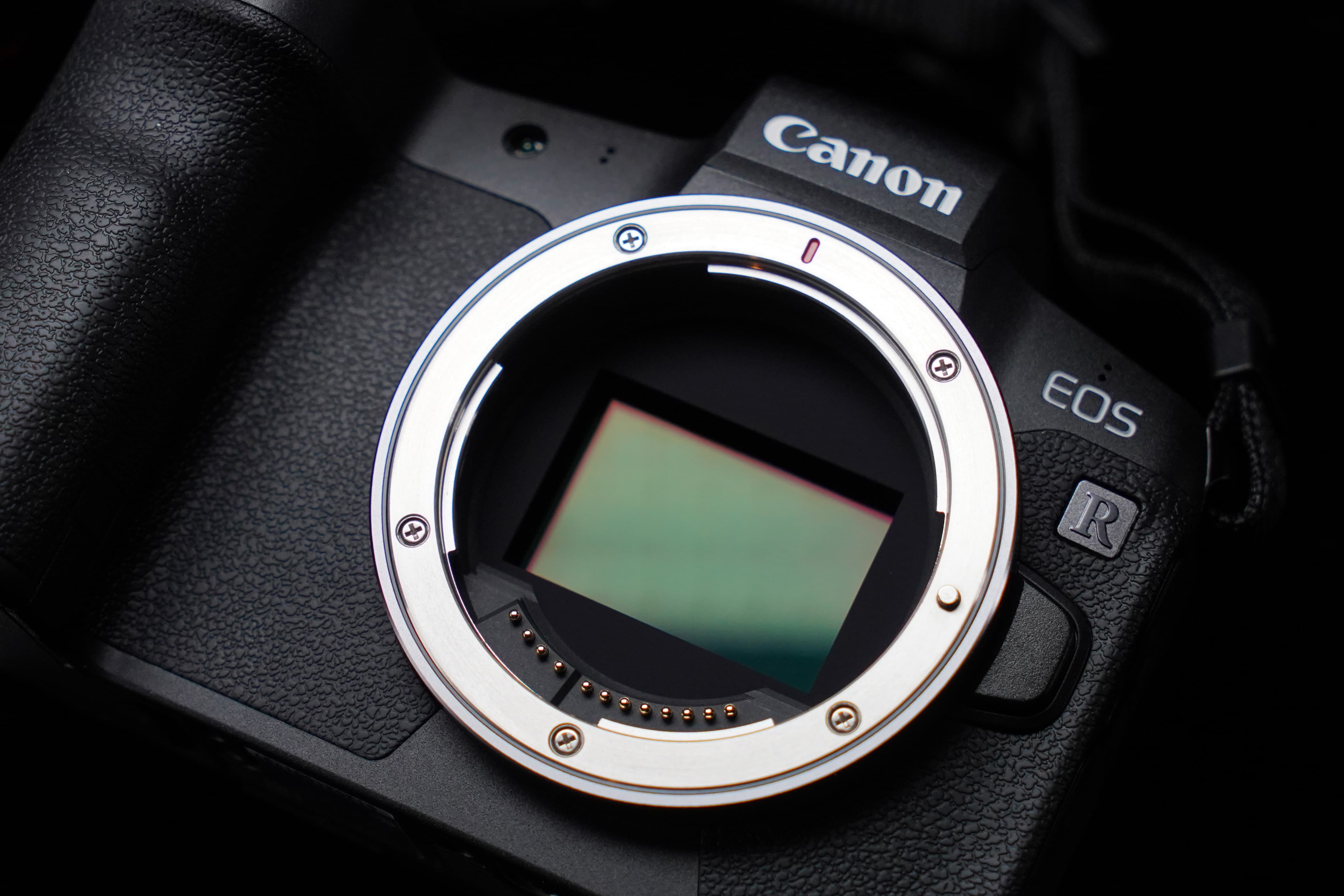
At its heart, the Canon EOS R features a 30.3MP full-frame CMOS sensor
As we’re used to seeing from Canon, the sensor adopts Dual Pixel CMOS AF and boasts what Canon claims is the world’s fastest autofocus speed of 0.05secs. Another world’s first is the EOS R’s ability to focus down to an extraordinary -6EV, which is supported by no fewer than 5,655 selectable AF points using the camera’s touch-and-drag AF function on its 3in, 2.1-million dot vari-angle display.
Eye-tracking AF is another feature that’s introduced and above the touchscreen you’ll find a 3.69 million-dot EVF offering 100% coverage and 0.76x magnification. Set to continuous shooting, the EOS R shoots 1fps faster than the EOS 5D Mark IV at up to 8fps with fixed focus and can sustain this speed for 100 JPEGs, 78 C-RAW images or 78 RAW files. Switching the EOS R to AF tracking sees the burst speed drop to 5fps.
The benefit of the EOS R’s electronically controlled focal-plane shutter compared to Canon DSLRs of the past is that it provides silent shooting for those times when you’d like to work discreetly. Those who’d hoped Canon’s full-frame mirrorless offering might incorporate in-body stabilisation (IBIS) like Sony and Nikon’s full-frame models will be disheartened. While optical stabilisation is featured on some of the new RF lenses (though not on the 28-70mm f/2 or the 50mm f/1.2) and many existing EF lenses, the lack of IBIS on the EOS R could be looked at as a missed opportunity by Canon.
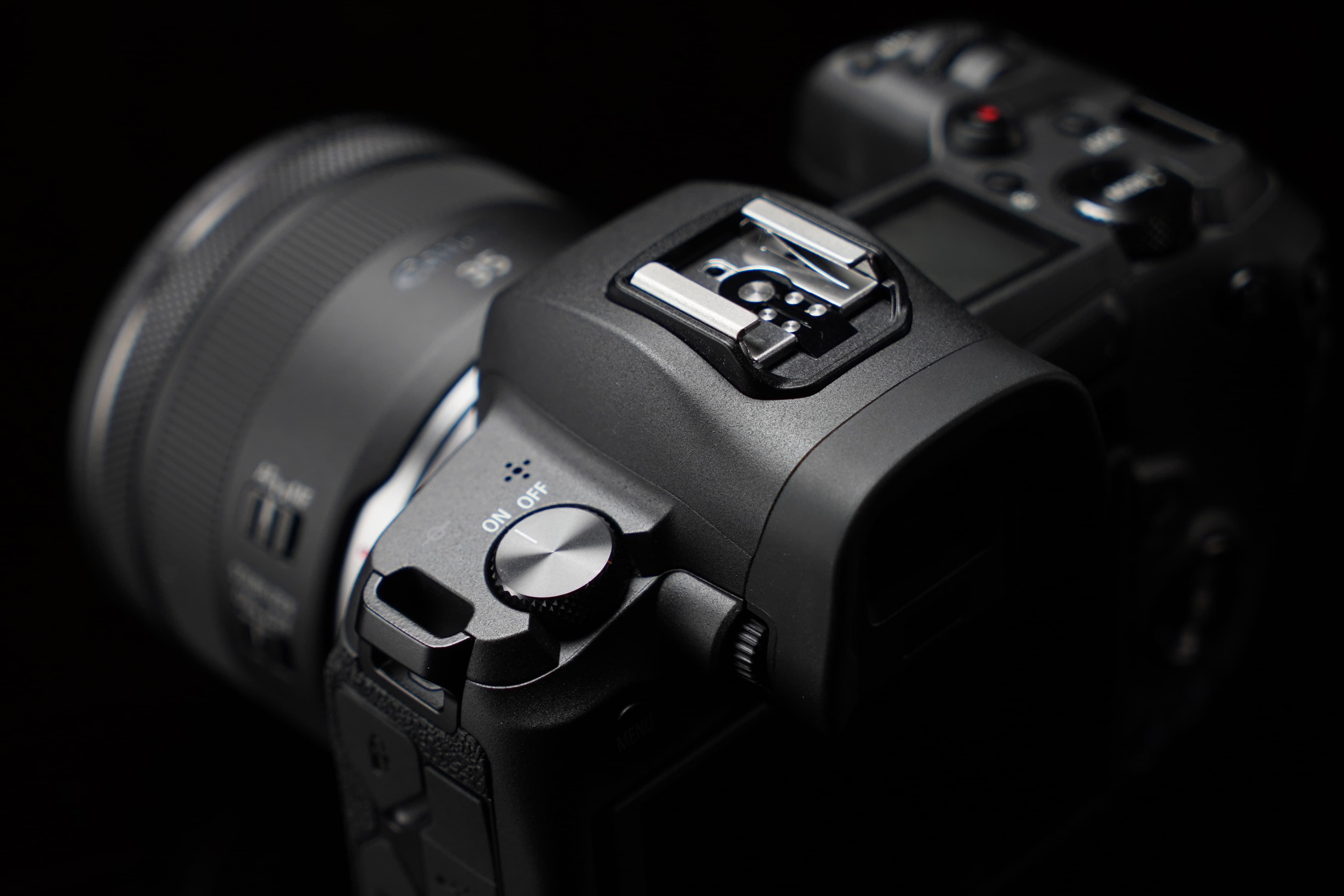
The EOS R’s on/off switch is positioned on the top left shoulder of the top plate
Another area where EOS R falls behind its Sony and Nikon rivals is the lack of full sensor readout 4K video – a move that’s presumably been made to ensure the company’s Cinema EOS lineup isn’t cannibalised. Just like the EOS 5D Mark IV, the EOS R’s 4K video has a 1.7x crop factor, with 4:2:2 10-bit video output available via the HDMI port. Internal 4:2:2 8-bit recording and Full HD 1080p video using the full width of the sensor at up to 60p is also available.
As well as microphone and headphone ports, there is always-on Bluetooth connectivity to ping and share images to and from mobile devices. USB charging is also supported via its USB C connector at the side and there’s the option to charge two batteries simultaneously via USB C when the Canon EOS R is paired with the new BG-E22 battery grip. More information on this can be found below.
Read our full review of the Canon EOS R
Build & Handling
The EOS R is built to a robust and hardwearing standard. Its magnesium alloy chassis and nicely sculpted handgrip offers a reassuringly solid feel, albeit noticeably less thickset than Canon’s EOS 5D Mark IV.
Said to be weather resistant to the same standard as the EOS 6D Mark II, the EOS R features a small top-plate LCD below which you’ll find a customisable multi-function M-Fn bar that can be personalised using slide or touch movements with your thumb. Users will find that the M-Fn bar is highly sensitive and it can be used to adjust a variety of different settings such as ISO and AF mode after the small M-fn button is pressed on the top plate.
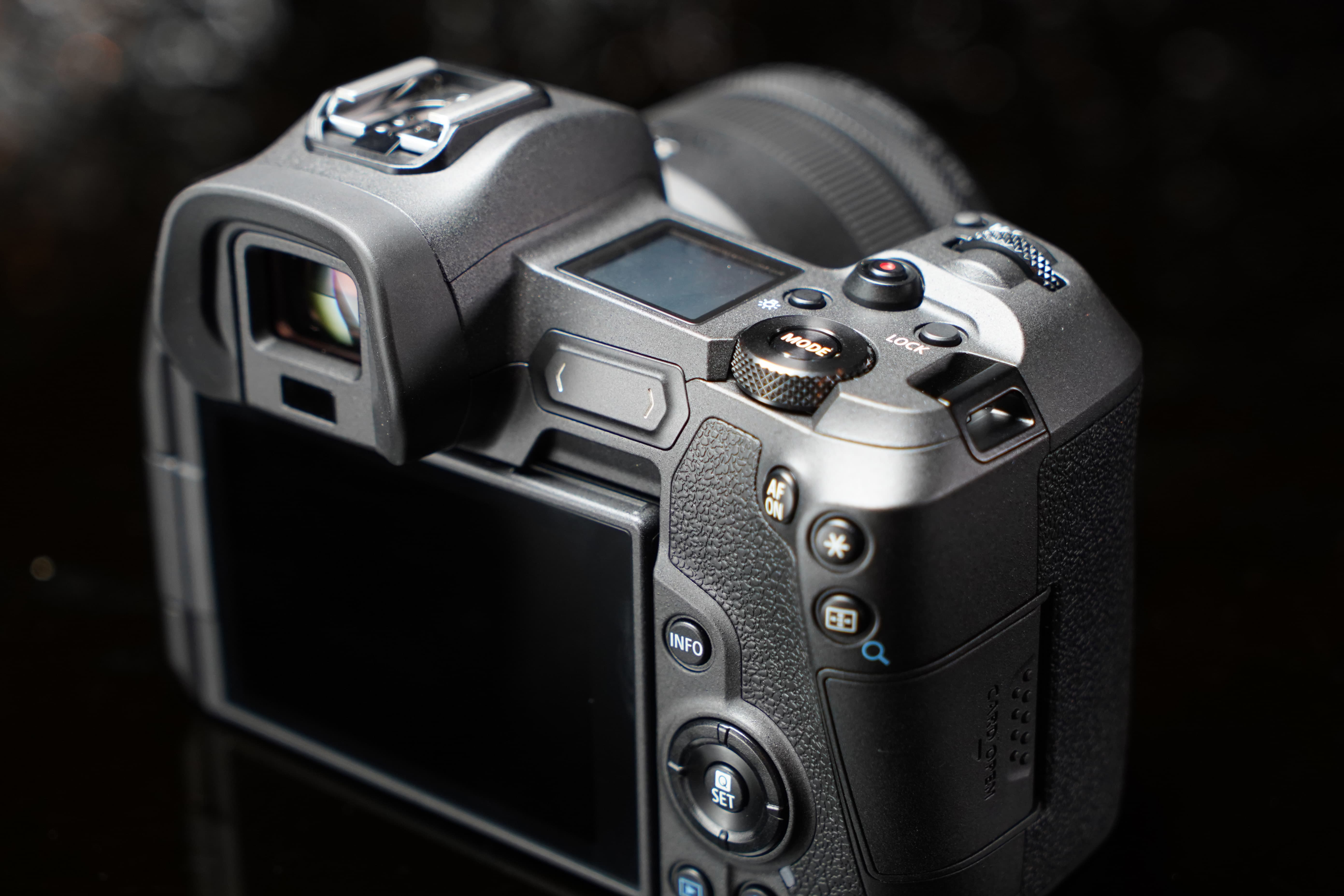
The customisable multi-function M-Fn bar is clearly visible to the right of the EVF
Tapping the top-plate LCD illumination button switches between a default view of exposure variables and a more advanced one that reveals additional shooting information. Holding the same button darkens the settings against a lighter background. To access movie-mode you’re required to hit the mode button followed by the info button and users will find almost every control on the body is customisable, including the customisable control ring on RF mount lenses that can be used to adjust aperture, shutter speed, ISO or exposure compensation.
Existing Canon users will notice there’s no mode dial or multi controller. Shifting the AF point around the frame is performed by hitting the AF point button and using the four-way controller or using touch and drag AF, which can be refined by setting the active touch area to a specific region of the screen. Personally, I found this less intuitive than having a dedicated multi-controller at thumbs reach and I much prefer the idea of a scroll wheel to quickly cycle through images in playback than using a four-way controller.
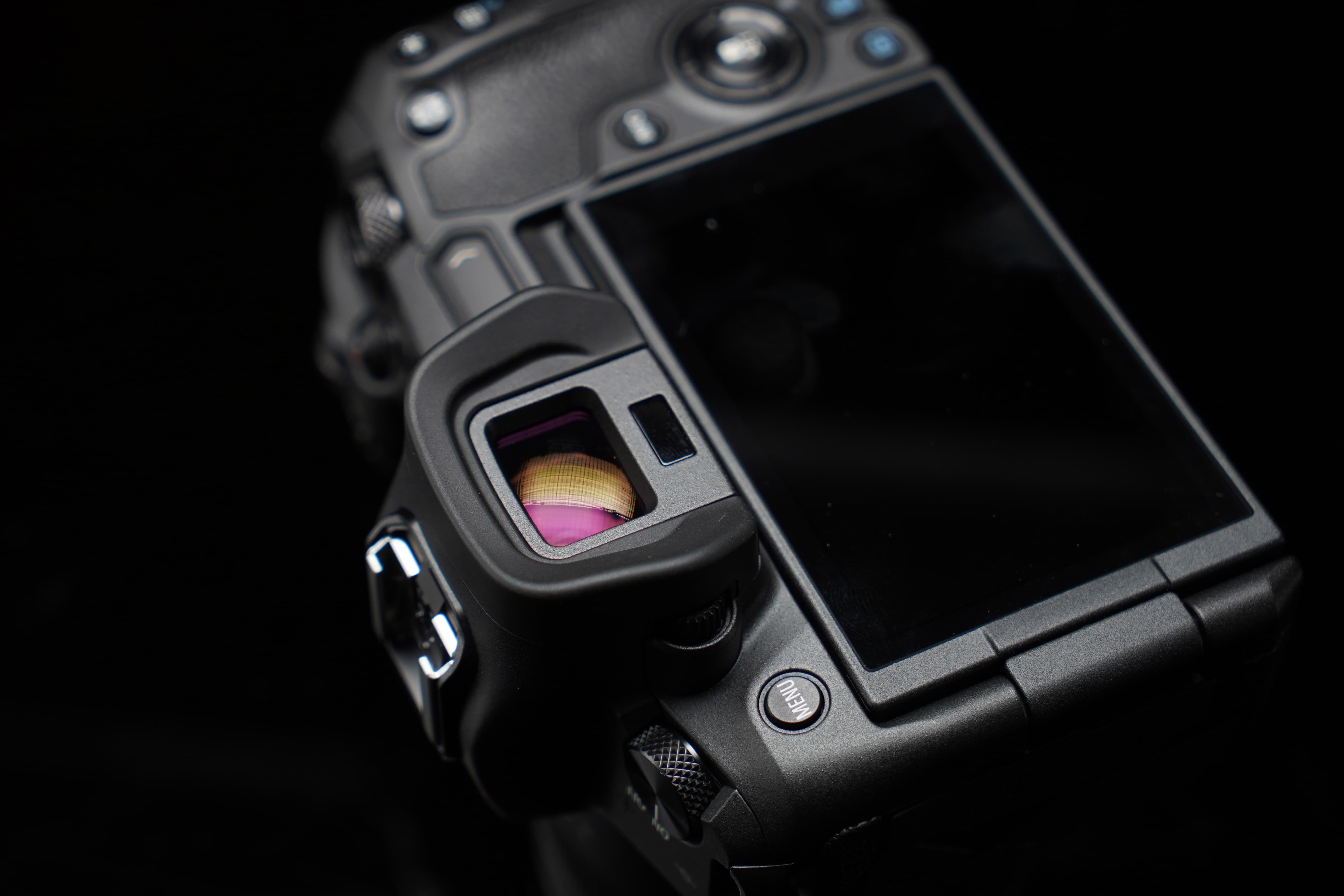
The EOS R features an eye-sensor that automatically detects when the EVF is raised to your eye
All in all, while the EOS R feels every bit like a Canon camera in terms of its build and finish, it’s quite a different camera to operate and control than the company’s DSLRs. The layout of the main menu will be familiar to existing Canon users, but without dedicated buttons on the body for ISO, exposure compensation, metering modes or drive modes, it takes some time learning how to get the most out of it.
Canon RF mount lenses
The introduction of the new RF lens mount marks an important step in Canon’s future and allows the company’s engineers to design new lenses that weren’t possible before.
Whereas Nikon unveiled three native Z-mount lenses for its new mirrorless cameras, Canon has announced four new optics for its new EOS R system. One of the most exciting is the RF 50mm f/1.2 L USM (£2,349) – the fastest fixed focal length prime currently available for the EOS R.
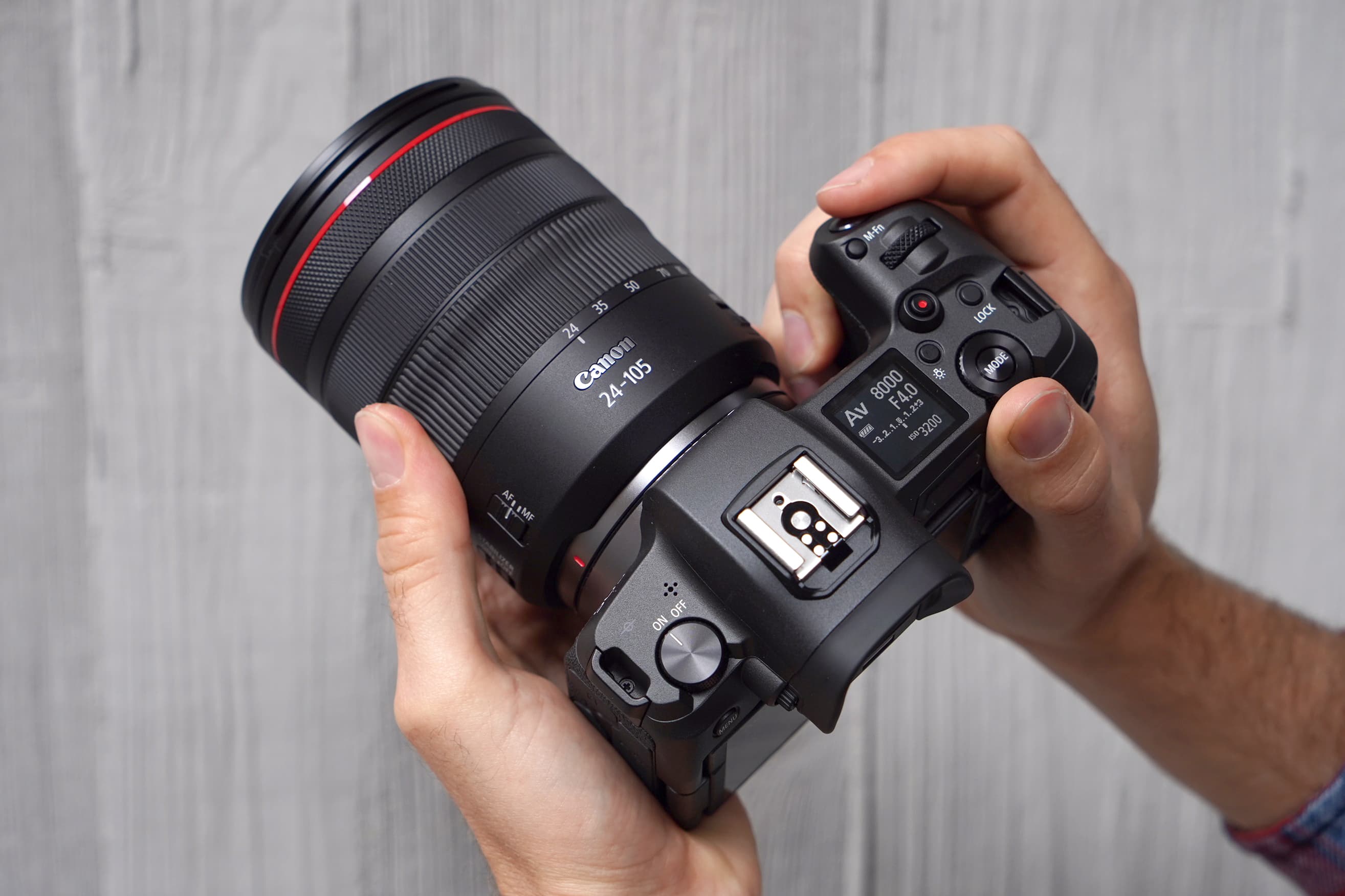
The EOS R in the hand with the new standard kit lens – the RF 24-105mm f/4L IS USM
The other prime that’ll follow up is the RF 35mm f/1.8 Macro IS STM (£519). These two fixed focal length lenses will be joined by two zoom lenses, comprising the RF 24-105mm f/4L IS USM (£1,199) and the world’s first large-aperture full frame compatible standard zoom offering f/2 brightness throughout the zoom range – the RF 28-70mm f/2L USM (£3,049).
Canon fully understands the importance of making sure existing EF and EF-S lens users can use their products with the new EOS R system, who will be relieved to hear suitable adapters have been made. More information on these can be found below.
Three EF-EOS R mount adapters
Canon has acknowledged that in order to make its new EOS R system a success, it has to support its vast number of existing users around the world who shoot with EF and EF-S lenses.
As well as a basic EF-EOS R mount adapter (£99) that allows more than 70 EF and EF-S lenses to be used with the EOS R system, Canon has developed an EF-EOS R control mount ring adapter (£199). This adds the control ring found on the new RF lenses, which in turn enable users to maintain the same level of customisation whether using RF, EF or EF-S mount lenses.
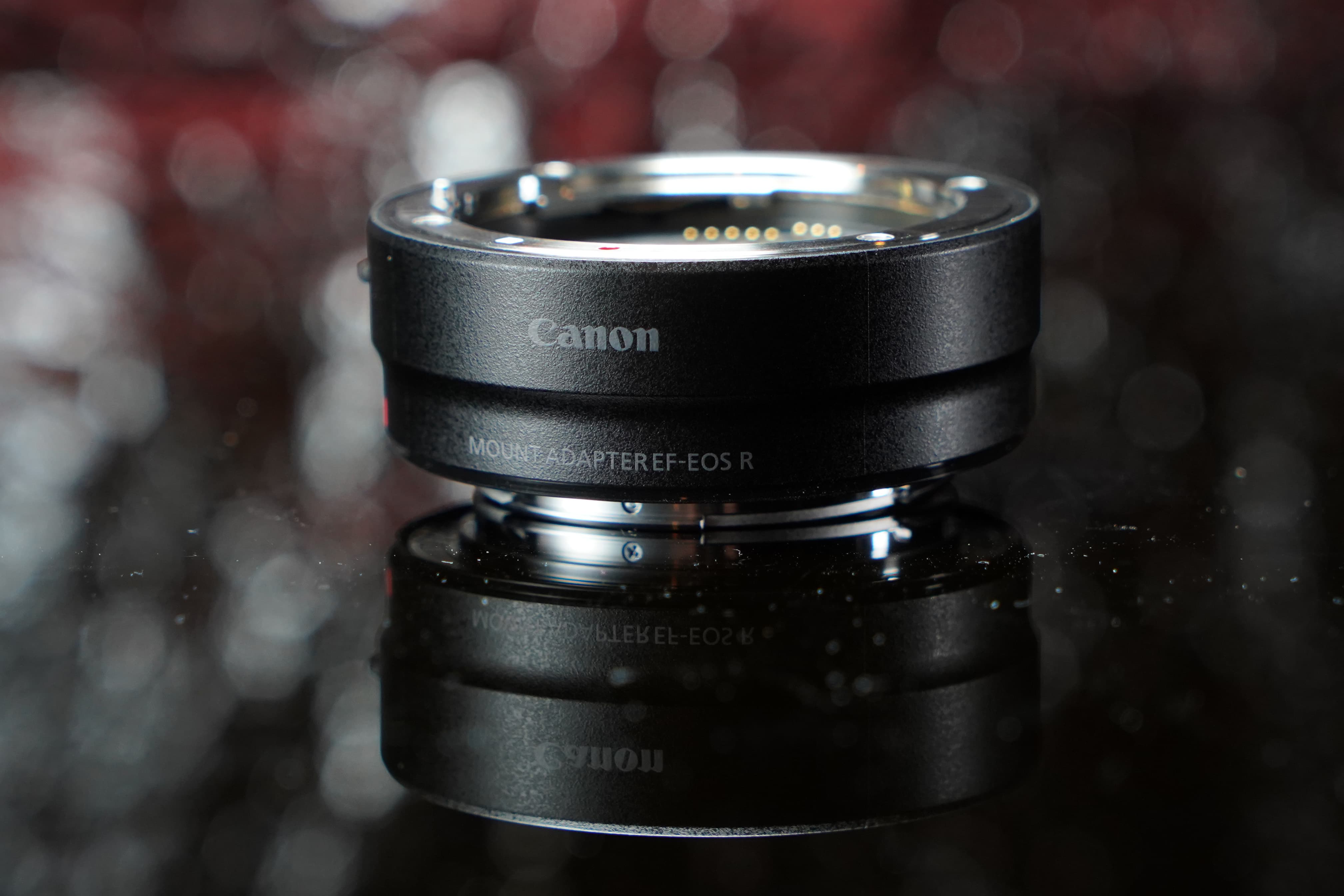
This is the basic EF-EOS R mount adapter. Note that this version doesn’t feature a control ring
The third mount adapter is ideal for those who may wish to use lenses that might prove difficult to add filters to. The drop-in filter mount adapter EF-EF-EOS R with circular polarizing filter will cost £299 and the drop-in filter mount adapter EF-EF-EOS R with variable ND Filter will cost £399. Each of the three adapters are built with professional use in mind and are fully compatible with the autofocus and optical stabilisation of the lens that’s attached.
New battery grip increases stamina
The Li-ion battery (LP-E6N) that powers the new EOS R is claimed to be good for approximately 370 shots before a recharge is required. Those who’d like to increase this shooting stamina to over 700 shots have the option to do so by fitting the EOS R with the optional BG-E22 battery grip (£329), which accepts a pair of Li-ion LP-E6N batteries.
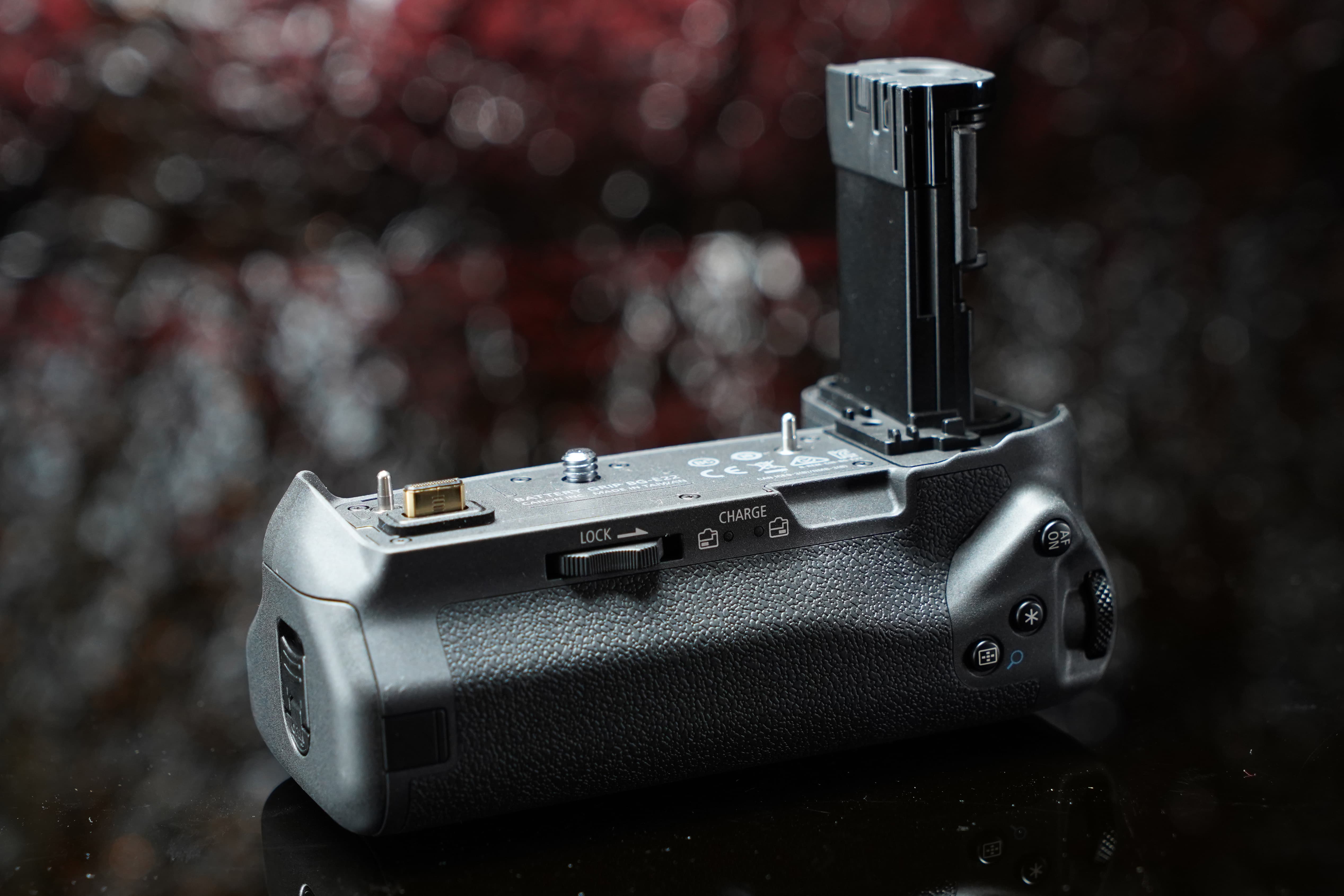
The BG-E22 battery grip holds two LP-E6N batteries in its removable battery tray
As well as providing extended shooting and enhanced handling in the portrait orientation with its well-positioned buttons and dials, the BG-E22 features a PC terminal to allow a traditional wired studio flash to be used with the EOS R. In addition, it provides a port just above the on/off switch at the side that allows both batteries to be charged via a USB adapter when you’re on the move. Small LEDs just beside the lock indicate when the batteries are charging.
First Impressions
With the EOS R, Canon has set its sights on challenging full-frame mirrorless cameras around the £2,000 price point. It goes up against rivals such as Sony’s excellent A7 III (£1,999) and the all-new Nikon Z6 (£2,099), but at £2,349 (body only) with the EF-EOS R adapter included, it’s the most expensive out of the three.
Canon hasn’t held back from making the body or lenses the size they need to be to ensure handling and optical performance isn’t compromised and the EOS R is a camera that has many positives – the build quality is top-notch, the vari-angle touchscreen is superb and the EVF displays a clear view and refreshes quickly. On top of this, I was impressed by its ability to acquire focus in extremely challenging lighting conditions where it also reacted quickly to both body and touchscreen based adjustments.
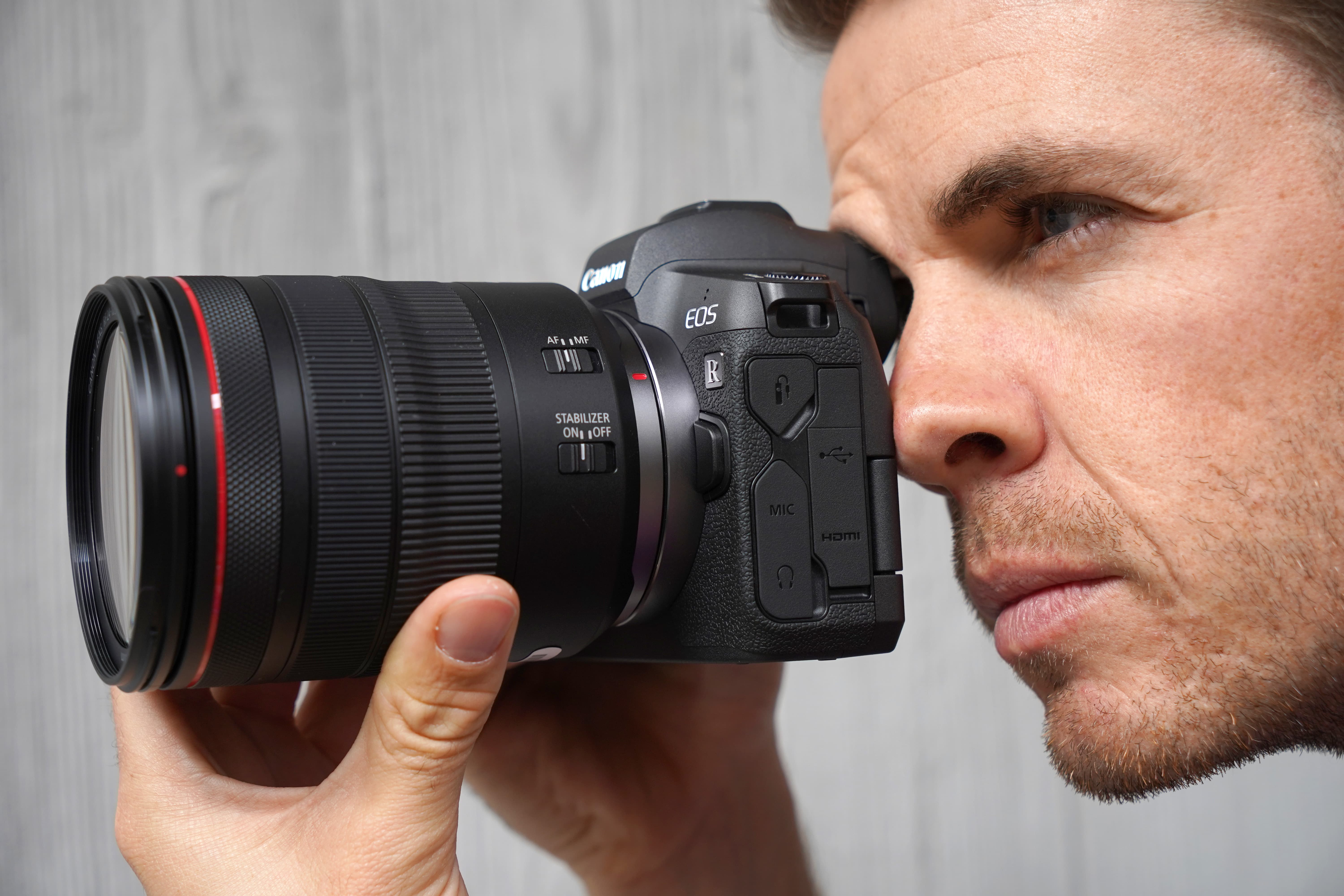
AP’s Michael Topham gets hands on with the EOS R at the European press event in London
I can’t help but feel that Canon might have missed a trick though. The way it lacks a mode dial, AF joystick and introduces a finickity M-Fn control does makes it feel more like a first generation camera than one that’s been refined over several years. The single card slot and four-way controller further reiterate it’s going to feel more at home in the hands of aspiring enthusiasts than serious and professional users expecting an EOS 5D-series level of control.
While the EOS R might be a camera that has room for improvement, it’s positive to finally see Canon enter the full-frame mirrorless market. I have confidence that the EOS R is just the start of better things to come in this exciting new series. We’ll bring you a full review of the Canon EOS R as soon as our review sample arrives, which we’re expecting in the next few weeks.
Read our full review of the Canon EOS R
Price and availability
The EOS R will be available to pre-order from 12th September 2018 and available to purchase from 9th October 2018. The breakdown of pricing is as follows:
- EOS R body and mount adapter – £2,349.99/ €2,729.99
- EOS R body, mount adapter and RF 24-105mm f/4L IS USM lens – £3,269.99/ €3,819.99
- RF 50mm f/1.2L USM lens – £2,349.99/ €2,729.99
- RF 24-105mm f/4L IS USM lens – £1,119.99/ €1,319.99
- RF 28-70mm f/2 L USM lens – £3,049.99/€3,549.99 (Available from December)
- RF 35mm f/1.8 MACRO IS STM lens – £519.99/€599.99 (Available from December)
- Mount adapter EF-EOS R – £99.99/ €119.99
- Control mount ring adapter EF-EOS R – £199.99/ €239.99

